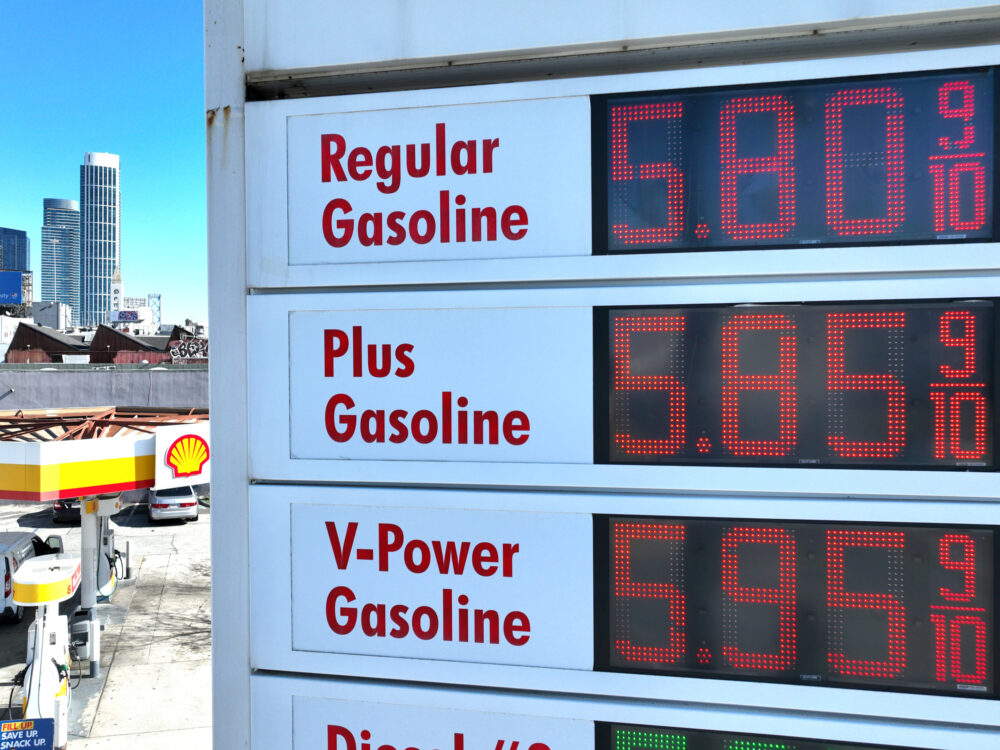
Gasoline prices may have eased off their peak, but they're still far higher than they were the last time crude oil traded at or above the $100-a-barrel mark eight years ago. Several factors have combined to drive prices at the pump into record territory.
Back in June 2014, the West Texas Intermediate (WTI) spot price of a barrel of crude oil crested at close to $108 a barrel, according to the U.S. Energy Information Administration. The average U.S. price of a gallon of gasoline that month registered about $3.77.
Compare that to the numbers in June of this year. The spot price of WTI crude went as high as $121.94 a barrel, 13% above its June 2014 price. But the average price of a gallon of gasoline peaked at $5.03, a whopping 33% higher than eight years earlier.
One major reason why is that the U.S. and Europe both lost a significant amount of refining capacity in recent years, particularly during the early phases of the COVID pandemic and the resulting recession.
"When oil demand collapsed and prices collapsed, a number of refineries closed, and companies made strategic decisions to close them permanently, on the expectation that more aggressive climate policies and more aggressive penetration of electric vehicles would mean that we wouldn't need as much gasoline down the road," said Mark Finley, fellow in energy and global oil at Rice University's Baker Institute.
Most of the U.S. oil refinery fleet is well over 40 years old and nearing the end of its operational lifespan. "For instance, in Houston, the LyondellBasell refinery is closing, because it would require many, many millions of dollars to just make it usable, to extend its life for the next five to 10 years," said Ed Hirs, energy fellow at the University of Houston.
Recent years have also seen the closing of refineries in California, Louisiana, Alabama, and especially the Northeast.
"Back in 2012, we had double the refining capacity in the Northeast as where we have today. We had about 1.6-1.8 million barrels a day of refining capacity. Today, we're at about 800,000 barrels a day of refining capacity," said Debnil Chowdhury, head of Americas refining at S&P Global Commodity Insights.
When the U.S. economy recovered from the COVID recession, and people began driving again, the demand for gasoline rebounded. Rising demand and constricted supply pushed prices up. The temporary shutdown of many refineries for spring maintenance gave those prices an extra bump.
Russia's war in Ukraine raised the problem to a whole new level, as much of the developed world slapped sanctions on Russian petroleum exports to put the screws to President Vladimir Putin's regime.
"It turns out Russia is not only a big exporter of crude oil," Mark Finley said. "It's (also) a big exporter of refined products, and those flows have also been disrupted by the crisis and the various measures that companies and countries are putting in place."
Most of that Russian gasoline typically goes to European markets. Europe has to replace that gasoline somehow, and the easiest way to do that is with U.S. exports. That competition for U.S. gas pushes up the prices at American pumps further.
"Keep in mind that European purchasers easily pay double what U.S. consumers pay for gasoline," said Ed Hirs. "It's an open market. There are no prohibitions against exporting crude oil and refined products from the United States."
There's one additional factor in play: China. The Chinese market represents a huge demand for gasoline, but it's also a major producer of refined products.
"China – which now has the biggest fleet of refineries in the world, having surpassed the United States recently – they're not a huge exporter of refined products, but they do export some refined products, and they put quotas on the export of refined products from their country," said Mark Finley. That means the main customers for Chinese gasoline exports, notably Pakistan and Singapore, are bidding up the price of gasoline on international markets as well.
Subscribe to Today in Houston
Fill out the form below to subscribe our new daily editorial newsletter from the HPM Newsroom.
from "price" - Google News https://ift.tt/t7SZsAb
via IFTTT
No comments:
Post a Comment